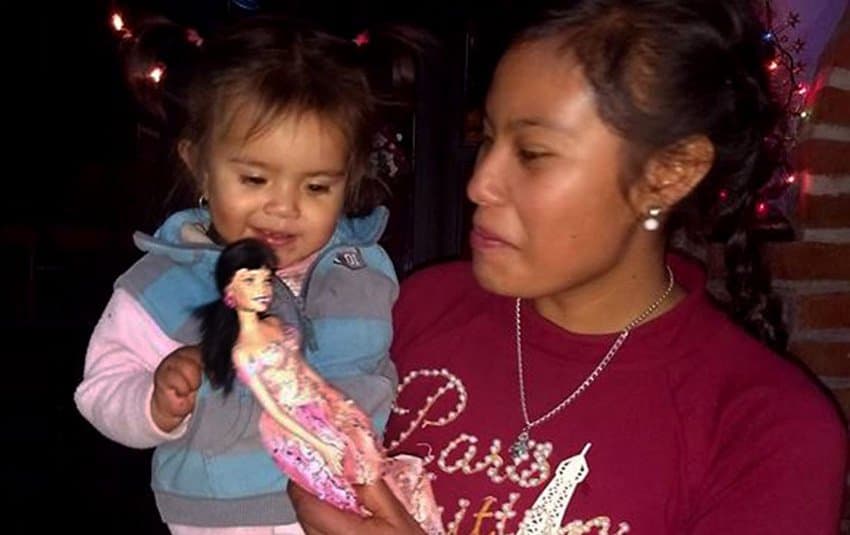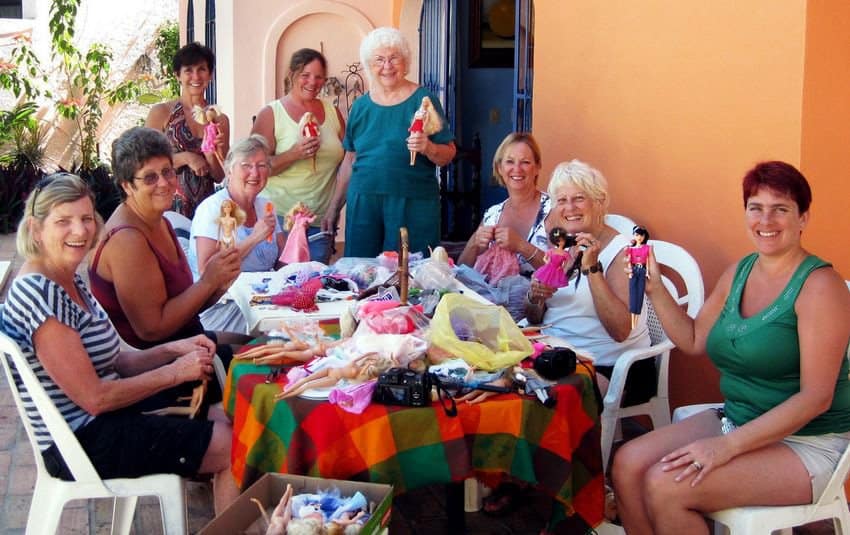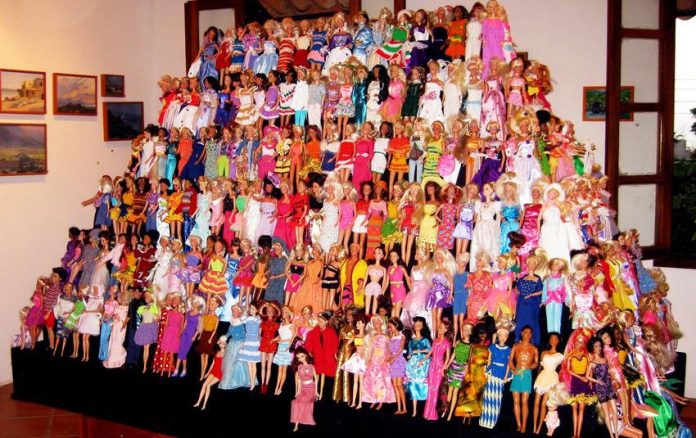Since 2003 the lives of thousands of girls in rural Mexico have been made brighter thanks to a retired Californian who loves to crochet.
Upon her retirement in 1990, Geri de Moss returned to a long-neglected hobby and began crocheting afghans and doilies.
She kept at it for 10 years, after which, she says, “All of the family had a generous supply of afghans and my husband — who is celebrating his 90th birthday this year — said we had enough doilies to put ‘doilies on top of doilies.’ I had garnered many blue ribbons from the county and state fairs, had sold and given away many of my creations and was looking for another avenue in which to use my crocheting expertise. Thus, the beginning of the Barbie Doll Adventure.”
Geri took a look at her great-granddaughters’ hand-me-down Barbie dolls and began looking for patterns to make new clothes for them. “At a local rummage sale,” she says, “I came upon an old instruction book for making knitted and crocheted Barbie doll clothes, which I purchased. It is still in use, although over the years I have learned to create some of my own designs to supplement the original patterns. As the girls grew older, they began losing interest in the Barbies and I needed another outlet.”
The De Mosses had spent decades driving around every part of Mexico. When they finally got tired of touring, they chose the pueblito of Rincón de Guayabitos, Nayarit, on the Pacific coast, 46 kilometers north of Puerto Vallarta, as the perfect place to spend their Decembers, far from the hustle and bustle of the big cities.

During the Christmas holidays of 2003, Geri crocheted clothes for a dozen Barbie dolls and gave them to a friend to distribute to local girls. The next year the number had increased to a couple of dozen and the following year the Guayabitos Homeowners Association collected 100 dolls.
Since then the number has kept on growing until it reached 1,150, the number of Barbies handed out in 2013 to girls living in humble villages on the coast or in the nearby mountains. At first, Geri and her friend Dawn Bevins were the only ones crocheting outfits for all of these dolls.
Soon they had the help of a dozen ladies, assisting them year after year in the tasks of cleaning up the used dolls, doing their hair and clothing them, not to mention managing the rather complex logistics of getting them all the way to Rincón de Guayabitos.
Says Geri de Moss, “The donated dolls have come by the boxful from the north and south, east and west of Canada and the U.S.A. During the past several years, I’ve had suitcases stuffed full of naked Barbie dolls arrive from Ontario, Alberta and British Colombia. Dolls from Alaska were donated though publicity sent out to all of their Lutheran churches. Two of the loaded down suitcases, from eastern Canada, were gathered by ladies working in their local hospitals, who asked their staff to donate used dolls. We get boxes coming from Seattle, Washington and Minnesota. One year I received two boxes from school children in Baltimore, Maryland, through their teacher.”
How long does it take to make an outfit for a Barbie doll? Geri, who is a fan of American football, says, “It takes the length of a typical game: three hours, more or less, depending on the difficulty of the outfit. Some of the fancier, more complicated designs may take a couple of games to complete.”
Once the dolls began arriving in the mail, Geri’s problem was getting them to Mexico.

“I fly to Rincón de Guayabitos and can’t bring all those dolls with me,” said Geri, “so I put out word on the internet that I was looking for someone who could bring them down by car. A man named Rick contacted me and offered to be my “Barbie mule.” That was maybe 12 years ago and ever since, Rick has been one of my best buddies.”
Rick the Barbie mule lives in California and every year receives boxes of dolls from all over the U.S. and Canada. “When I would arrive at Customs,” he told me, “they used to give me weird looks as soon as they discovered all those naked Barbies in the back of my car. So I got smart and now I leave them inside the original packages, sealed up, addressed and stamped, just as I received them. I figured: why make things easier for the Aduana? All of this had them running in circles because, as you know, Customs people are always asking, ‘Are you carrying any packages you got from someone else?’ “
Rick is now one of several Barbie mules who, for a while, were transporting about 800 dolls a year to Mexico. And — it should be mentioned — the beneficiaries of the project are not just girls. “I usually bring down a case of Hot Wheels,” says Rick, “so the boys don’t feel left out. I mean, what boy likes getting a pair of socks for Christmas?”
The Barbie doll, by the way, was born on March 9, 1959 at the American National Toy Fair, and like so many Americans, she was actually an immigrant, virtually identical (at first) to the Lillie doll, made in Germany in the late 1940s and, according to Time magazine, based on a “blonde bombshell” cartoon character in the Hamburg tabloid, Bild-Zeitung.
It is interesting to note that the German doll was initially sold to adults but quickly became popular with children who enjoyed dressing her up in outfits which could be purchased separately. In 1956, Ruth Handler, co-founder of Mattel, spotted some Lillies in Switzerland and bought three of them, recognizing the market potential of a doll that girls could dress in the latest fashions and role-play in different careers.
She renamed the doll after her daughter Barbara and the rest is history. Today, well over a billion Barbies have been sold, but not many of them are recycled like those collected by Geri de Moss.

“This year,” says Geri, “we only did 180 Barbies and this was thanks to the generous help of my core group — Millie, Linda and Kris, and to the groups that distributed them — the Christian church in La Penita, nurse Vicky in Tuxpan, Mateja’s restaurant, the Los Ayala helpers for their Three Kings Day celebration, and Michelle and Ana in Oconahua, thanks to a little help from Rick the Barbie mule. Will we do this again next year? Right now I can’t say. Let’s see what 2019 brings.”
While next year’s plans are still unknown, the success of this year’s distribution can clearly be seen on the happy face of the very last little girl to receive her Barbie — Michel de León Reyes of Oconahua, Jalisco. “Gracias,” she said. “Que bonita sorpresa!” — what a beautiful surprise.
[soliloquy id="68034"]
The writer has lived near Guadalajara, Jalisco, for more than 30 years and is the author of A Guide to West Mexico’s Guachimontones and Surrounding Area and co-author of Outdoors in Western Mexico. More of his writing can be found on his website.
